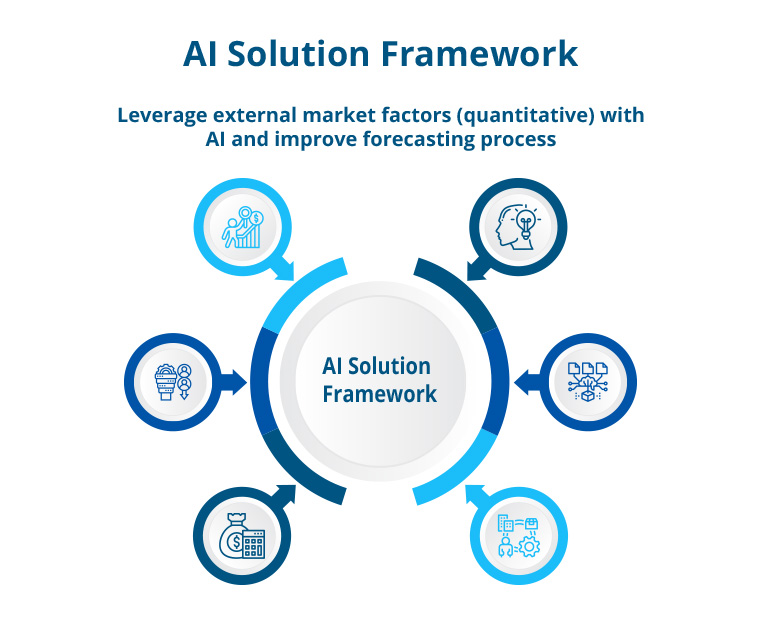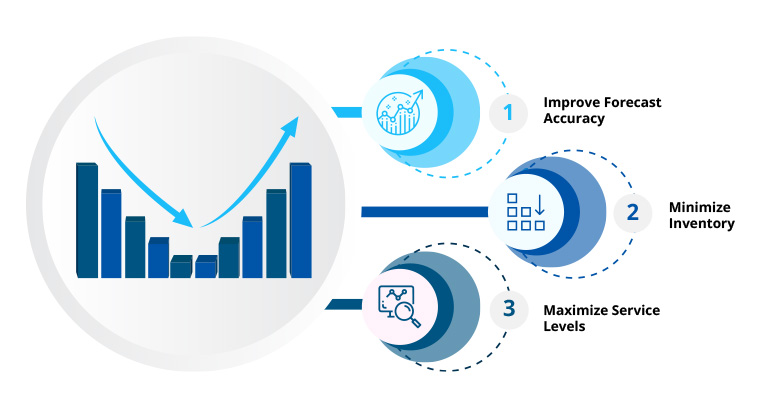Many organizations rely on internal historical data to drive demand planning and forecasting in today’s dynamic world. While this process acted as a rich source of insights, its ability to create accurate forecasts degraded significantly during the pandemic. It had frequent demand anomalies making it difficult for supply chain managers to predict and act in real-time. They often had to manually realign strategies with external market conditions and find ways to meet customer demands. However, with supply chain 4.0 – the next generation digital supply chain – organizations are taking an opportunity to make demand forecasting more dynamic and resilient.
Traditional forecasting was based mostly on historical data residing in the enterprise systems and the manager’s knowledge of external data. Demand planners made manual corrections to forecasts based on market inputs related to external data (Market trends, Weather, Local events, etc.). Often the process created a huge lag with forecast accuracy.
While the forecast worked to a degree at the aggregate level, they had huge errors that were hard to explain at the SKU level. The statistics from CFO research services in Fig 1 provides an independent view of how external factors influence forecast errors and inventory.
Forecasting is mostly a monthly process, and any major deviations within the month have been a challenge both from process and systems. Demand and Inventory managers have to make complex and costly inventory decisions based on forecasts that could be inaccurate. The loop between demand planning and supply planning is often broken, making supply chain manager’s role in their ability to make supply chain trade-off decisions complex and tedious.
Very few organizations today have clear and robust capabilities to co-relate external variables’ impact on their forecasts.
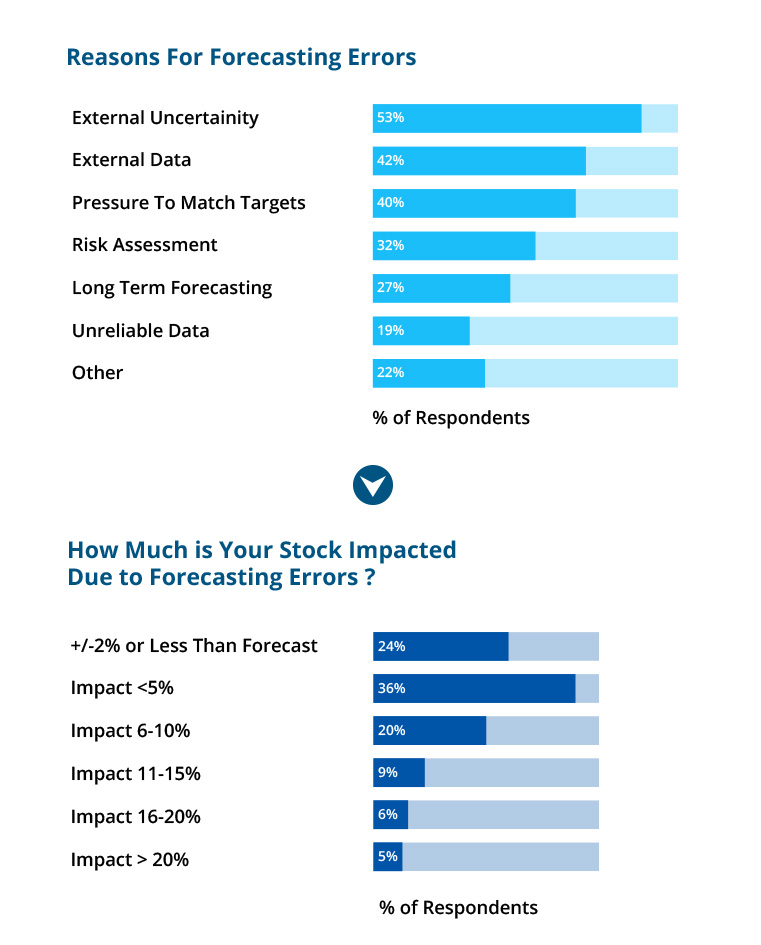
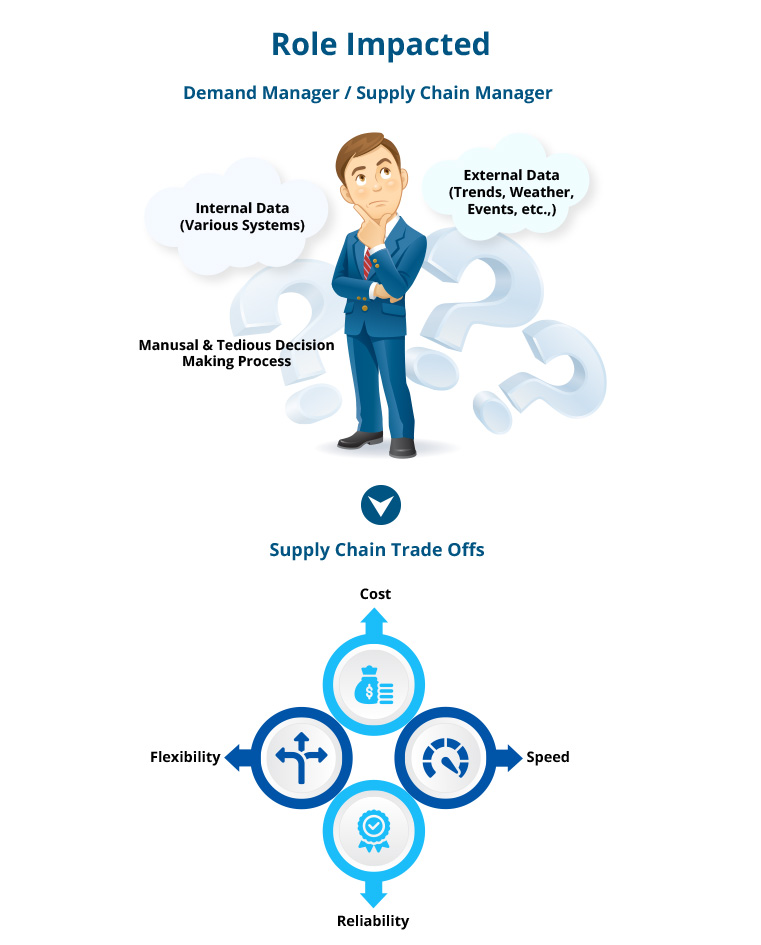
As industries move towards Industry 4.0, the volume, velocity, and variety, value, and veracity of supply chain data become all the more significant for increased supply chain risks. One of the key hedges to prevent a digital disruption is to have a world-class forecasting process that is intelligent, dynamic, and constantly adapting to changing markets. Customer expectations in the digital world are dynamic, with highly individualized products driving a trend towards mass customization. Forecasts in the digital supply chain need to be more granularly segmented at a customer level, allowing them to choose ‘exactly’ what fits their needs. Forecasts need to be carried out dynamically on multiple time frames, i.e., monthly, weekly, or even daily, based on the product velocity. Inventory levels need to be adjusted accordingly in a digital supply chain to ensure the right product is at the right place at the right time in the right quantities.
Manage demand variability with an intelligent demand sensing platform
Develop forecast in a higher level of granularity
Balanced inventory with service and customer loyalty
Detect and respond to supply chain risks pro-actively
AI-enabled demand planning framework (Fig 4) engages demand managers by sensing and analyzing hundreds to thousands of internal as well as external demand influencing variables (Fig 3, e.g., weather, trends from social networks, machine data, Enterprise systems data) with Machine Learning, optimization and Bayesian approaches to uncover and model the complex relationships and predict an accurate and granular forecast. These advanced algorithms provide probability distributions of the expected demand volume rather than a single forecast number. These new technologies enable a significant improvement of demand forecast accuracy, often reducing the forecast error by 30 -50%.
The AI framework also enlightens demand managers by connecting the dots between structured and unstructured data of the Supply Chain, allowing for targeted discussions, including upside potential and downside risks in the Sales and Operations Planning(S&Ops), and advanced inventory management approaches. The framework also enables planning into a flexible, continuous process. Instead of using fixed safety stocks, each replenishment planning considers the expected demand probability distribution and replenishes to fulfill a certain level – the resulting implicit safety stocks are therefore different with every single reorder. The framework enables demand and inventory managers to integrate the safety stock decisions quickly and easily in their enterprise systems.
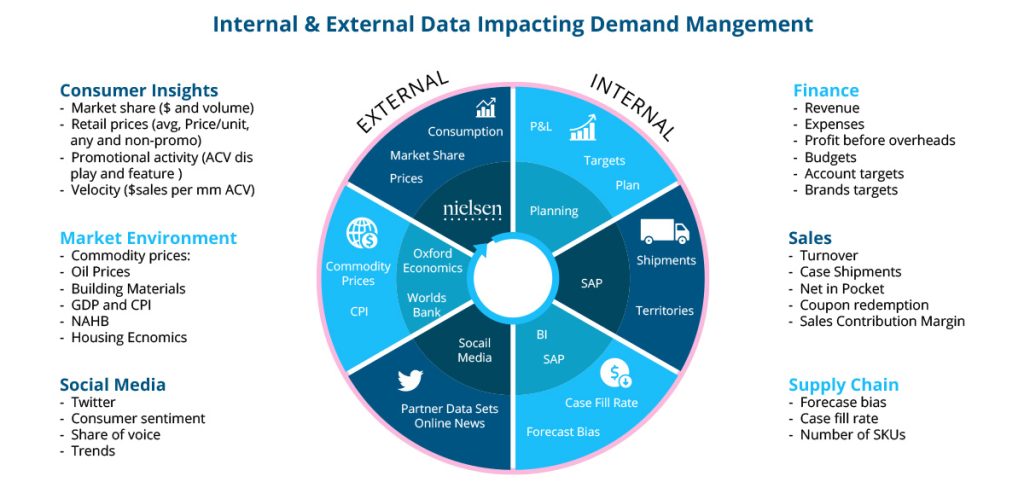
Demand-External and Internal (Structural Data)
Generate Probabilities and Demand
Cost Optimization and Inventory
Machine Learning and Big Data Processing
Predictive Models Generate Corrected
Cognitive APIs/Unstructured Data Visibility to Supply Chain Risk Factors Generate Contextually Corrected Demand
